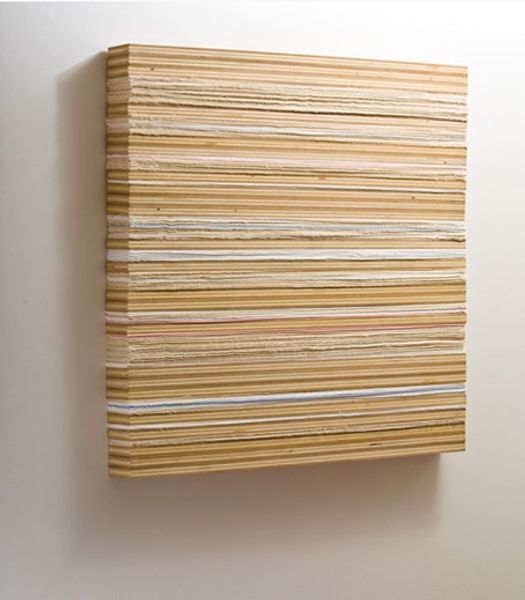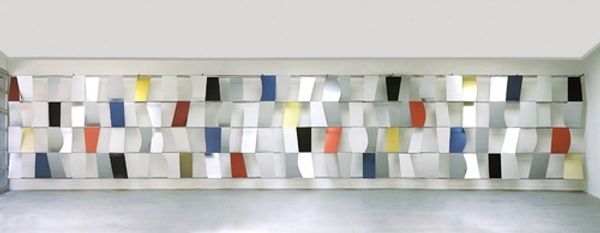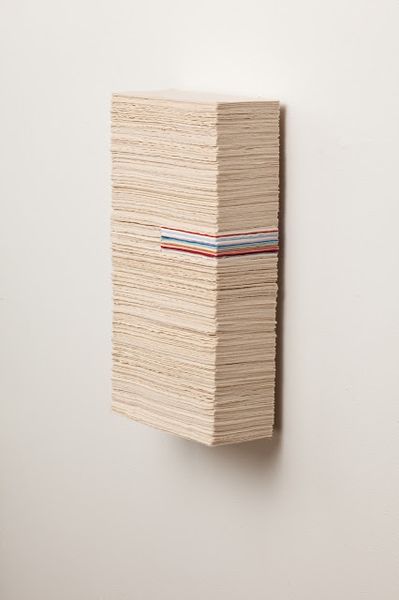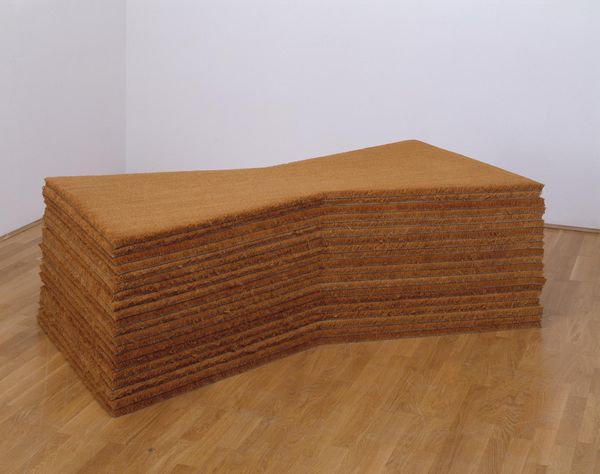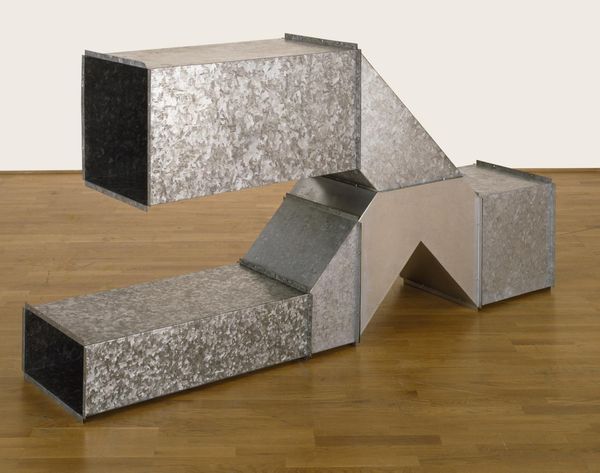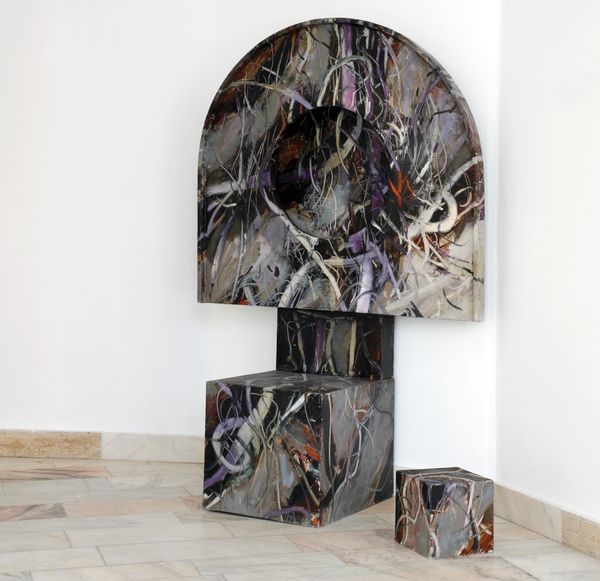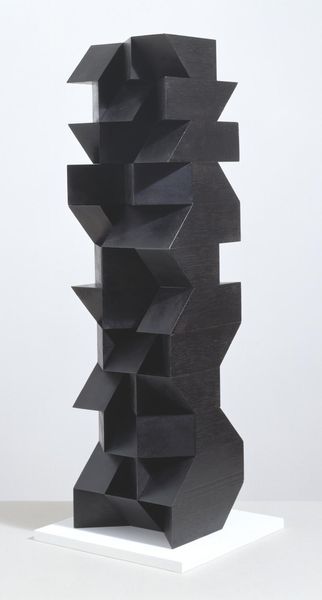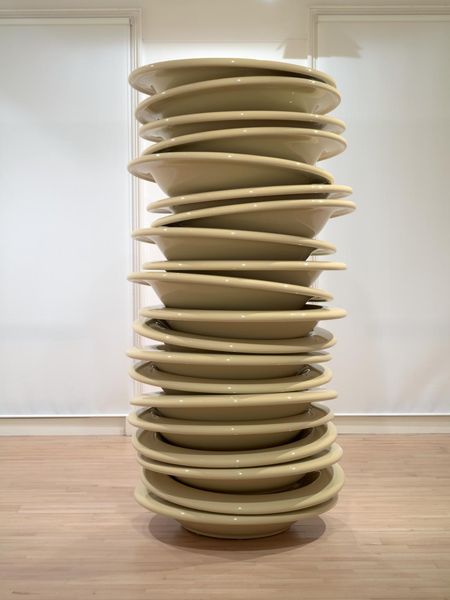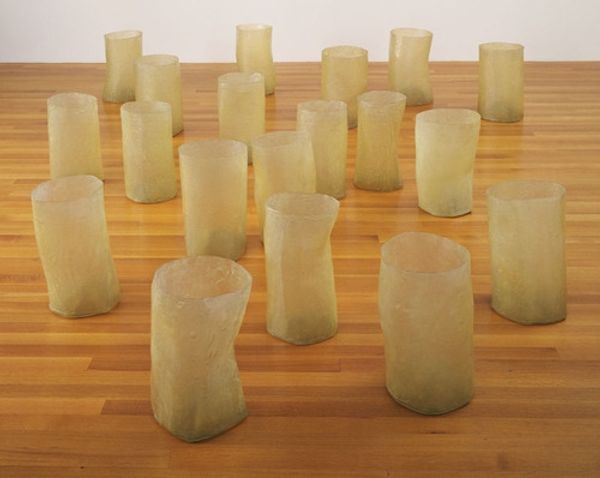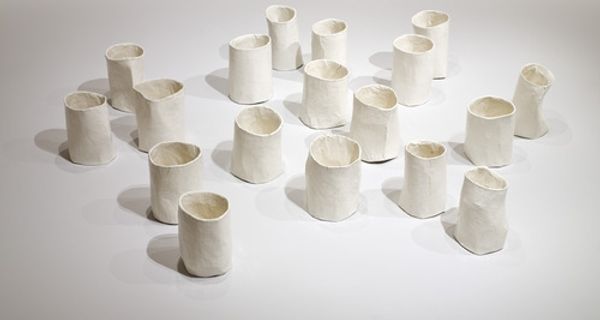
Copyright: Phyllida Barlow,Fair Use
Phyllida Barlow's "Hive" presents us with a layered form evoking both organic growth and architectural construction. The horizontal strata, built from everyday materials, call to mind geological formations, each layer a record of time and pressure. Consider the ziggurats of ancient Mesopotamia, artificial mountains built to reach the heavens. Like those structures, "Hive" suggests a primal urge to build upwards, to create order from chaos. The layering itself mirrors the act of remembering, of accumulating experience. This constructive gesture also reminds of that of the Tower of Babel, a reminder of human ambition and the fallibility inherent in such monumental endeavors. The rough, unrefined materials add another layer of meaning. The collective memory, a reservoir of images and symbols that shape our understanding, speaks through this form. It resonates on a subconscious level, evoking feelings of awe and unease. The unrefined form, the accumulation of layers, speaks to the cyclical nature of creation and destruction. In "Hive," Barlow taps into this ancient visual language, reminding us of the enduring power of symbols to transcend time and culture.
Comments
No comments
Be the first to comment and join the conversation on the ultimate creative platform.

